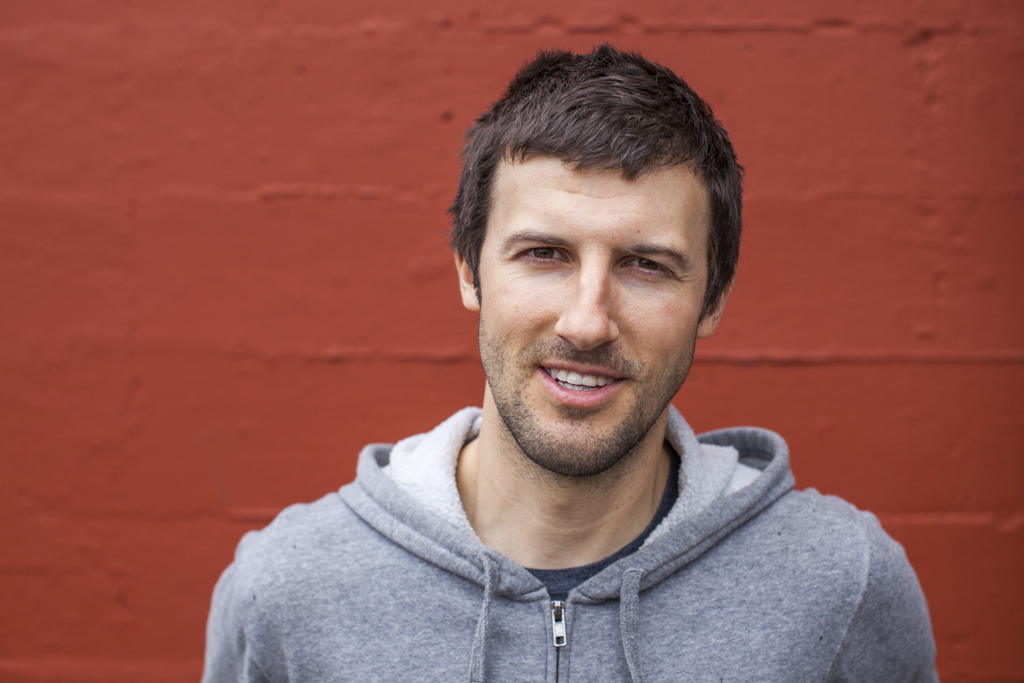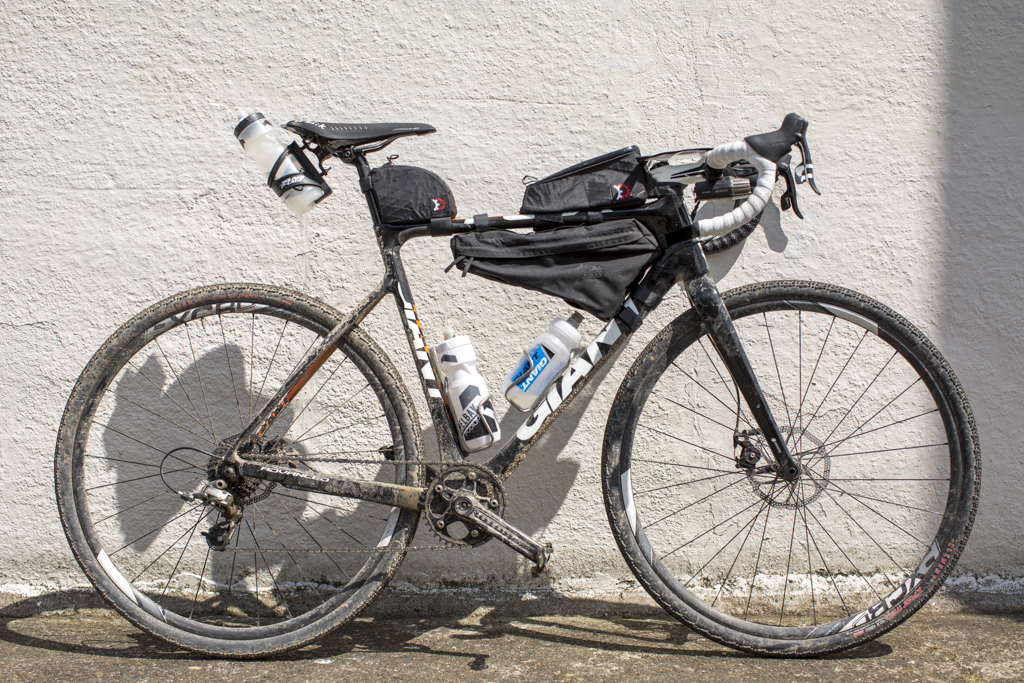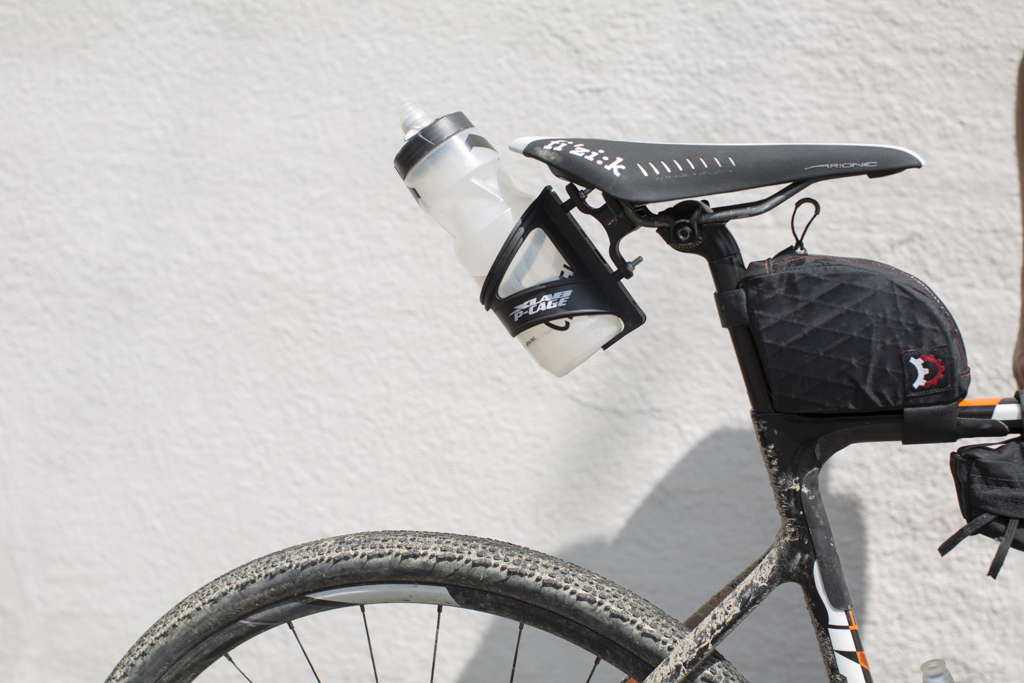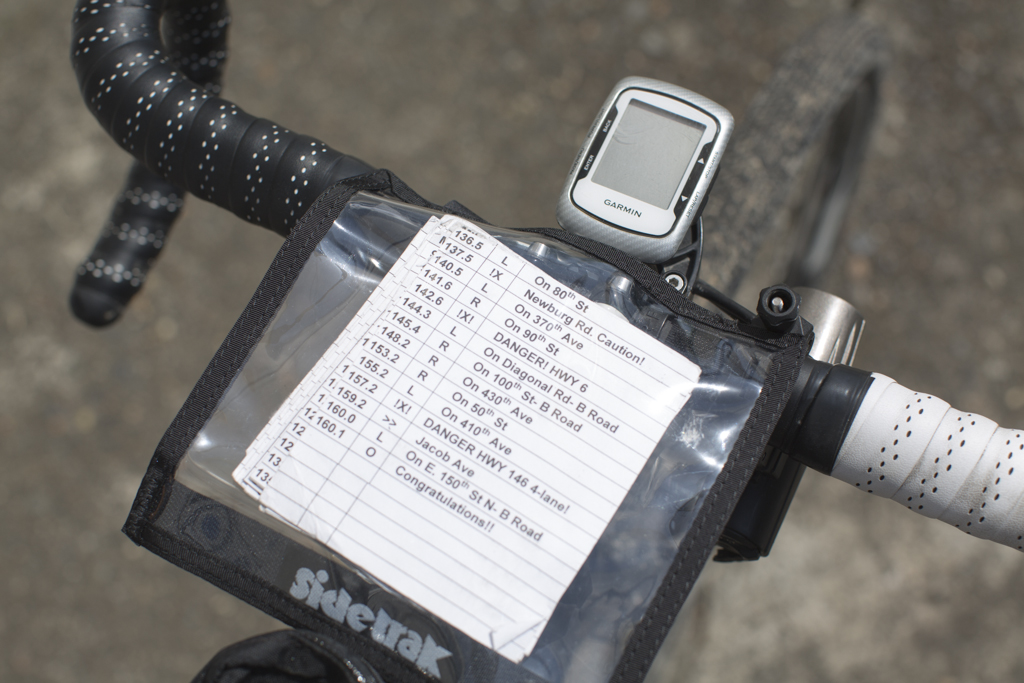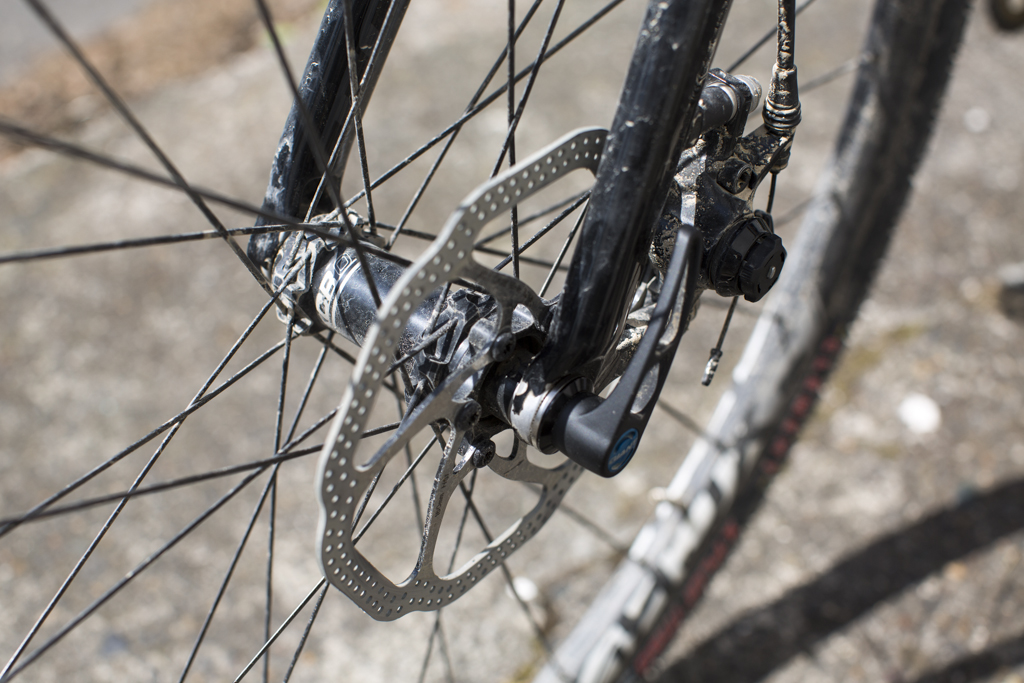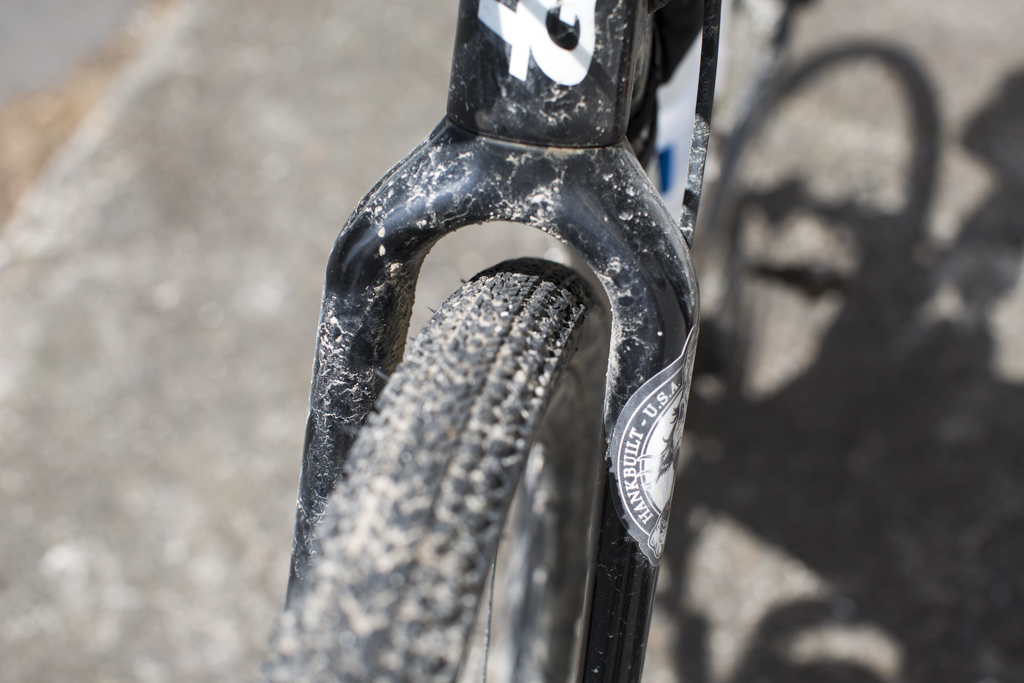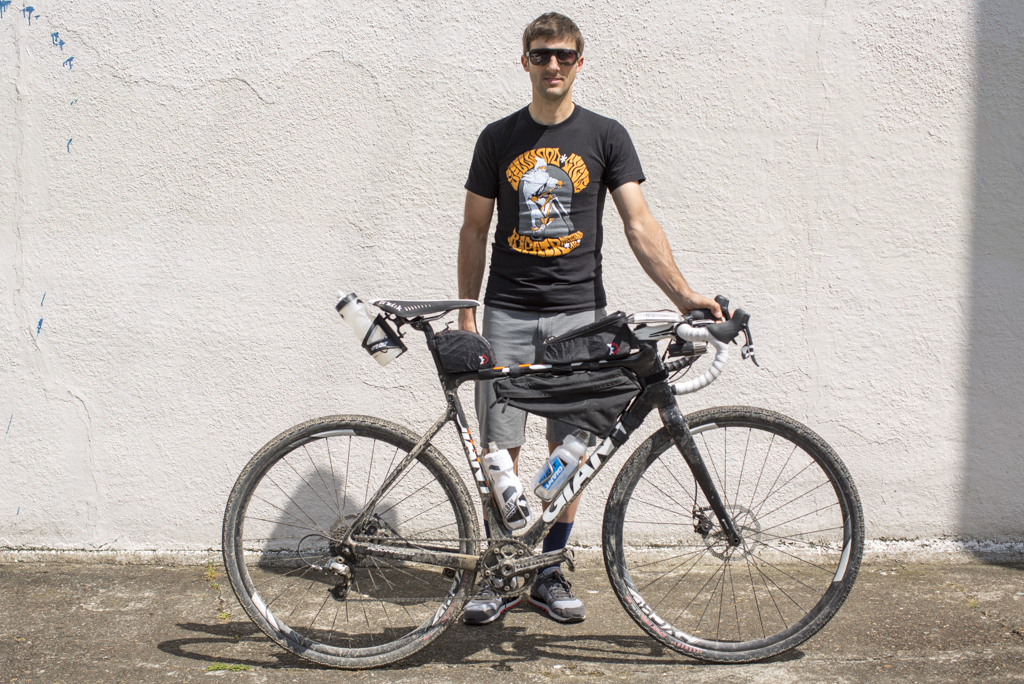Paul LaCava: Trans Iowa 2014
I don't know too many people that have Paul's drive to push their cycling in every realm: Enduro, cyclocross, Road, Gravel racing, Fastpacking, and just plain mountain biking. Paul does it all and he gets after it. He loves to push himself on his bike, usually solo. He rode from Bend to Oakridge in a day - all on trail. He finished second in the 2014 Trans Iowa. While we were all driving out to the Dalles to ride the Velodirt Dalles Mountain 60 ride, Paul was waking up at 3am to ride all the way from Portland to the Dalles in addition to doing the 60 mile gravel route, so he could log a 170 mile day in just over 11 hours. At first I just knew Paul as the local Giant rep who crushed at local CX races but I kept hearing more about Paul's exploits. I met up with Paul at P's & Q's for lunch and a pint right after his Trans Iowa race. Fast forward a bit to summer 2014: Paul just broke his fibula recently while racing Enduro and based on his FB posts I know he's scheming to come back with even longer and harder rides. Wishing you a speedy recovery Paul! His Q & A about his Trans Iowa race begins below the gallery.
La Cava Trans Iowa 2014.
Paul has finished the Trans Iowa race twice out of three attempts. This year he finished in second place in the 10th annual running of the race.
How did you first get interested in the Trans Iowa race?
My first exposure was a friend of mine Chris Nygard, who is from a small town in Iowa. It was just a casual interchange about some crazy ideas. They just said this is straight up your alley as far as one of the dumbest ideas you could possibly do. There was no knowledge of what the race truly entailed because no one had done it. I think that got the gears turning about three years ago.
Quick history of the race When did the race start?
This year was the tenth annual. 2004 was the first.
And you started thinking about it three years ago?
My first attempt was version 8, which was a failed attempt. It was pretty tough. The race itself was certainly harder than my first successful finish last year. It was a fairly difficult year of wind and weather. I don’t know how bad it was, since I only made it 70 miles. It’s usually 320 to 330 miles, this last year it was 336.
Did you know what you were getting into that first year?
Not really. I had an idea but I think the terrain was more intimidating in person than I had visualized it. I went into it with no sleep the night before and the immensity of the task at hand made me mentally shatter.
Is there any way to research the race route?
Just the basic stats. You know you’re going to be racing a certain distance based on the promoter’s information in the fall. You’re essentially racing an unknown course because it’s always different each year and you don’t know what that course is going to be when you start. The only thing you know is that it’s going to be a heck of a lot of gravel and it’s very hilly contrary to what you’ve heard about Iowa and the weather is the true wild card. There’s always going to be some kind of bad weather to make it harder. That was the main factor that caught my interest early on is not just that it’s very long but there is this unknown quantity to it. That’s the power of this race: it’s the unknown. It’s so huge that anything can happen. You can start out with the best intentions and end up with just about anything happening. Something along the way will not go right and you have to adapt.
What is required for training. How do you train for a race like that?
I didn’t really have any particular experience that told me that a certain volume of training was sufficient. My approach for the last 3 seasons, which was pretty similar each year although I did more and more each winter to prep for this. But I also wasn’t just training for this race I was training for other things. Just riding bikes is what I end up doing I just happen to ride them more in preparation. Assuming you have decent year round fitness from riding a lot, you could get up to speed in 3 to 4 months. If you were planning for this you’d have to have a pretty set plan well in advance. You know if you’re going to sign up by the fall. You need to start planning some time after the holiday. Get out riding. Roughly speaking I averaged 15 hours a week of riding from January through end of March and then tapered a bit into the race. I specifically rode on very bad weather days. One in particular stands out, a 157 miler two years ago that rained a few inches in one day. Maybe for 12 hours straight. Character building stuff.
Do you ride a lot of gravel? Do you train on the same bike?
As much as the terrain in Oregon has allowed me. We have some good mixed routes, but not a lot of really extended options, especially in the dead of winter. I enjoy it mostly to connect the dots on really rad routes in remote places. It was hard to fully replicate what I’d be in for at TI. For this particular event it’s key that you think through your gear choices a lot and that you’re comfortable with your bike. You just need to know things like: Are my feet going to go numb after 12 hours on the bike? Will my saddle work? Do my clothes keep me dry after 5 to 6 hours of rain? You need to just have those things figured out. Beyond that it’s just confidence gained by knowing what works and what doesn’t. If I don’t have to worry about my technique or how I’m going to approach the race then I can just focus on the task at hand. A lot of the time in preparation was spent trying to figure that out. Every year I took a different bike the last three years I’ve had different clothing and different bike. I went through a couple different bike fittings to reassess how I fit on the bike and all those things played into the success of feeling good when you’re 25 hours into a race and you should probably be going to sleep.
Sleep is not in your strategy or is it?
It’s not a stage race. It’s just a point-to-point loop format that will take you approximately a day to a day and a half to finish and there is no time to rest. If you’re going fast enough in theory you could stop for a nap. Some people have been known to stop for a quick snooze but not intentionally. The thing with any endurance event that’s long enough to challenge your ability to sleep but short enough so it’s not a multi-day it’s really just that you need to keep going. Your body just tends to just shut down if it thinks it’s in rest mode you’re done. It’s over. Sleep is bound to be a factor in this kind of distance that is in the 24-hour range. I was so wired in the second year I was just so pumped. But this last race about 10 days ago I definitely had some tough times in the night trying to stay focused. I think mid morning around 3 am to sunrise I had a tough go of it this year just trying to stay awake. This was roughly about the same time that we had fought an immense lightning storm, not knowing where the heck we were, and just piloting in the dark on autopilot at 15mph.
How do you get through that? What about caffeine?
There is definitely some caffeine intake. I know some folks will back off on coffee if they drink that regularly. I think I was on a pretty big coffee kick all spring so the caffeine probably didn’t work for me as much as it could. Staying awake can be part being hydrated and warm. The discomfort will help keep you awake as well. You have to be uncomfortable to an extent. I have a big addiction to Jelly Bellies lately. I just chew on those. The Sport Beans. I used some espresso gel the year prior and I just didn’t feel like taking that this year. I did grab a few chocolate covered coffee beans from a coffee shop in Des Moines and I used some of those at night, but I don’t’ know if they did any good. I offered them up to some fellow racers and no one took them.
Do you carry everything with you or do you hit stores?
This one is built around some store access. In rural Iowa that’s all you’re bound to get. It’s surprisingly remote in a lot of areas then you’ll arrive in a small town and the race is purposely routed through a few stops. There is some vague information about what you’ll find there or whether they’ll be open when you pass through them. The cue sheet will tell you but you know some of this information when you start the day before. You get some of this information from the promoter leading up to the race, which will determine how much to stuff you carry with you.
My general approach is to carry only what you have to…erring a little on the side of too much. I wanted to go lighter than I did this year to go faster, but when facing down the start of this race, it hits you like a train the enormity of what’s ahead, and you are going to regret more about what you didn’t bring than what you bring. I used all of my clothing I brought this year, mostly a lot of top notch Rapha thermal and rainwear, which involved nearly anything I would consider riding in the worst weather Oregon ever has to offer. Basic repair kit, pump, a couple tubes and a patch kit, several frame bags carefully arranged for the possibility of needing to shoulder the bike on clay roads that require hiking with the bike, over 1000 lumens in lights to make it through the first sunrise and the entire 2nd night, spare battery, 2 garmins (batteries don’t last long enough), lots of chamois cream, a Cue Sheet and holder, maybe 2,000 calories of food, and a few water bottles. Also a brush for scraping the mud off the tires. And I specifically plan clothing and gear for no backpack so careful arrangement of items in jersey pockets and layering/delayering of clothes while moving with little stopping. This year there were four stores, the second two of which were closed so we had to ride about 160 miles with nothing, outside of a little Pepsi machine I found at 4am in this really small town. I kept putting $5 bills in to get a single Pepsi, but it wouldn’t give change. I think we bought $20 in Pepsi for the crew! Sometime during the middle of the night I pretty much ran out of everything I had this year. Typically I’d be really worried with 3 or 4 hours to ride. I had almost nothing for the last 4 hours. It’s mostly mind over matter at that point so as long as you have some water coming in it’s maybe enough to maybe get you through. You could easily consume 5 - 10,000 calories of food on this little adventure. I think I ate 3 slices of pizza, a Coke and a couple other goodies at 8 pm going into the 2nd night. And that was just a large snack.
What do you eat for food?
I’m not too religious about what I take in. I eat Hammer Endurolyte pills about one an hour. My friend Brad got me their new extreme tablets, it’s like a triple dose. I had Nuun and Hammer fizz to add to the bottles. I had some Skratch labs for liquid energy. I went pretty hard on the Jelly Bellies this year. I had like 15 packages of them. They made me happy lately so I just stuck with it. The thing I’ve learned from endurance racing you have to be happy but you can make these bad decisions all of a sudden. This year I went pretty light and fast with the amount food I took. You can count on having two to three water resupply points and hopefully they’re at the right moments. You’d probably be leaving with 4 bottles, which is about 100 oz. of water. Some people would take almost double that at times. You could be going 100 plus miles without access. The last two points of access were from 6pm until 7 or 8am. I think I only drank 4 or 5 bottles during the night over the last 11 hours. I’m not sure how I got away with that.
Best moment/worst moment?
Best moment is when you roll into the finish. This year about four of us rode together. Chris Schotz, Troy Krause on a single speed, both of whom are prior finishers. Derek Reeder all from the Midwest. Great crew to ride with through the night. I rode on ahead in the last hour, right after ducking for cover on our second major electrical storm of the night. The Midwest weather is no joke! I was terrified, even in our numb state of mind. The last 30 minutes I just rode 25 mph, the wind finally at our backs, just as high as I could be feeling like I could do no harm. There was no pain at that point for sure. The high outside of the anticipation of starting is just sunrise and sunset. I remember we had a glimpse of the red moon which was virtually no moon this year. At sunset you have this really optimistic sense of having ridden almost 200 miles around that point. Then you’ve got have a long night ahead of you but I was with a great group of six at the time, the suns setting you’ve got these idyllic clouds in rural Iowa. You’re just feeling good at that point.
How competitive are you? Are you riding together or racing alone?
Very competitive in some ways, but I do it for my own reasons. This is a race in the loosest sense possible. At the end of the day you’re going to be ahead and behind some folks. You might go try to win. I went in shooting to break the never been done sub-24 hour time last year or to merely survive a very hard course and weather year (2014 was considered the worst of both), but quickly re-evaluated that in light of horrible headwinds all day and changed my strategy to ensure I’d finish. All of this is pretty personal in terms of goals. Most of it is just finishing. You might have an idea of how you want to finish. It’s as social a race as you could possibly get. You’re almost definitely going to find yourself riding with people for a huge chunk of it. The second time I did it I rode about 13 - 14 hours by myself. This time I only rode a few miles by myself. I always had one to seven riders I was riding with, but everyone is fighting their own battles. The friends I’ve met in this process are folks I am honored to know. The best folk!
What are the biggest challenges of this race?
It’s very conditional on the weather. It’s been finishable every year but one I think. If you have too much rain the day of the race or the day before that’s going to be your worst enemy. The pace can vary dramatically based on how wet the roads are. The main thing is the unmaintained clay B-roads. They go through these river valleys at times or just some cool connector roads and you can’t ride those once they get because your bike will just gum up with mud. Wind is your number one enemy, rain is your second and this year we learned that lightning was a major factor. It was in the upper 30s and low 40s and slightly raining at times. We had to wait out two sections of serious lighting in an old barn for 30 minutes with major strikes maybe a quarter mile away! At 1 am we had to wait it out in a barn. You can’t have prearranged support. You’re not supposed to be connected to the outside world. You’re not supposed to have any GPS routing. It makes it more pure to not have all that bullshit.
What do you want people to know about this race?
It’s a pretty batshit crazy race really. I got into this one for some odd reasons. It just struck my interest. It could hold a lot of people’s interest, some people. For me it was more of a challenge to finish it. It’s been the hardest thing I ever done in my life. It’s just the process: what you have to do to get ready for it. The kind of rides I’d do to get ready for it forced me to branch out, break out the maps, and plan some really dumb training rides. Almost half the distance of the race. I would pick a couple rides that were a double century.
What kind of events are interesting to you going forward?
I think the stuff out there right now is pretty fun. It’s got people thinking about more adventuresome rides. The vibe is good. You’ve got all kinds of cyclists out there having fun. I think these kinds of rides will grow in popularity. I’m not sure yet what the future holds, but it will likely involve a lot of days where I get done, grab a beer at the pub, and have a shit eating grin on how ridiculous an idea that was. I find the key is to convince myself ideas aren’t as stupid as they end up being, and somehow pull it off. People like to have a reason to push themselves. Sometimes it just takes someone else promoting a big idea to get you off the couch and make it happen. That’s going get you do something you didn’t plan on doing by yourself.

